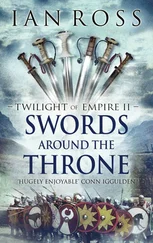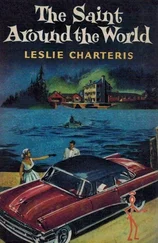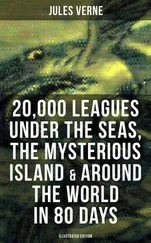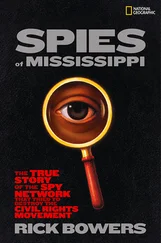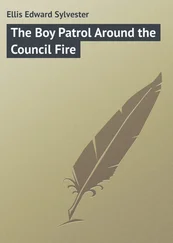Rick Spilman - Hell Around the Horn
Здесь есть возможность читать онлайн «Rick Spilman - Hell Around the Horn» весь текст электронной книги совершенно бесплатно (целиком полную версию без сокращений). В некоторых случаях можно слушать аудио, скачать через торрент в формате fb2 и присутствует краткое содержание. Жанр: Морские приключения, на английском языке. Описание произведения, (предисловие) а так же отзывы посетителей доступны на портале библиотеки ЛибКат.
- Название:Hell Around the Horn
- Автор:
- Жанр:
- Год:неизвестен
- ISBN:нет данных
- Рейтинг книги:4 / 5. Голосов: 1
-
Избранное:Добавить в избранное
- Отзывы:
-
Ваша оценка:
- 80
- 1
- 2
- 3
- 4
- 5
Hell Around the Horn: краткое содержание, описание и аннотация
Предлагаем к чтению аннотацию, описание, краткое содержание или предисловие (зависит от того, что написал сам автор книги «Hell Around the Horn»). Если вы не нашли необходимую информацию о книге — напишите в комментариях, мы постараемся отыскать её.
Lady Rebecca
Hell Around the Horn
Hell Around the Horn — читать онлайн бесплатно полную книгу (весь текст) целиком
Ниже представлен текст книги, разбитый по страницам. Система сохранения места последней прочитанной страницы, позволяет с удобством читать онлайн бесплатно книгу «Hell Around the Horn», без необходимости каждый раз заново искать на чём Вы остановились. Поставьте закладку, и сможете в любой момент перейти на страницу, на которой закончили чтение.
Интервал:
Закладка:
He had also learned not to tell the story of the mighty wave that struck them off Cape Horn in 1905, because no one believed him. He knew the story was true. The ship, the waves, the storms and the men who lived and died, they were all more true than anything else he had ever known, even if no one believed or understood.
At least two sailors understood, because they were there. As he was passing by his parents' house in Devon just before signing aboard the Clan McCollough , as a newly minted mate, he found a letter from Fred Smythe waiting for him. They began a long exchange of letters, not more than once a year but the years had added up. Fred had moved to the Northwest of the United States, worked as a cowboy for a time, then as a teamster, until finally settling down as an insurance broker. An insurance broker! Who could have imagined sailor Fred behind a desk wearing a suit and starched collar? Over the years all of Fred's letters were always addressed to "Apprentice William Jones." Captain Jones always wrote back letters addressed to "Able Seaman Fred Smythe.”
He had kept in touch with Captain Barker, as well. Barker retired after a long career straddling sail and steam. He rounded Cape Horn forty-one times before he finally came ashore. There he kept busy giving lectures for rich yachtsmen about the great days of sail. No doubt they sat in rapt attention, like children at a magic show, listening to the old captain spin his tales.
Only last month, just before sailing on his current voyage southbound, Will had gotten a letter from Captain Barker. A group of writers and artists had just purchased an old square-rigger, the Sophie . They were going to rename her Tusitala , in honor of Robert Lewis Stevenson. The Samoans called Stevenson Tusitala , the storyteller. The new owners had asked Barker to be the captain of the newly renamed ship. Captain Barker had asked, he presumed in jest, for Jones to join him as mate. "Be just like old times," Barker had written.
He had written back congratulating him without responding to the offer. It could never be like old times, nor would he want them to be. He did have to laugh. The new owners planned on trading the Tusitala between New York and Hawaii, by way of the Panama Canal. They wouldn't be risking their ship around Cape Horn. That time had passed.
Captain Jones stepped closer and put his hand on the rusted steel plating of the Lady Rebecca . It felt warm to the touch, like a living being, though he knew that it was only the warmth of the afternoon sun captured by the rusting steel.
Behind him the boatman called, " ¡Señor, hora de ir! " Time to go . It was time. He took his hand away from the steel and saw that is was covered in rust. He stepped down to the water's edge, bent down and washed his hands in the sea. The swirling rust looked to him, for an instant, like blood in the water. Then another wave came and washed it away.
Captain Jones gave the launch a shove, pushing it off the beach before leaping aboard at the last instant. The boatman pushed the gearbox lever and the throttle, and with a puff of black smoke the little steam launch backed off the sand and swung out into deep water.
Captain Jones looked away from shore. He had another ship to care for, cargo to load and discharge, passages to make and schedules to keep. When he finally allowed himself to look back at the Lady Rebecca , she had all but disappeared in the early evening haze.
Author's Notes
At the turn of the century there were between four and five thousand large and medium-sized sailing ships circling the globe, still managing to pay their way. Most of these ships came to be known as "windjammers." They were very a different breed from the "clipper" ships of fifty years before. Whereas the clippers were built for speed and to carry high value cargoes, the windjammers were built to carry bulk cargoes as cheaply as possible. The windjammers were significantly larger ships of iron or steel and carried more cargo than the clippers, which were were usually built of wood. Though the windjammers were considerably larger, they carried smaller crews than the clippers. The windjammer can be looked upon as the most advanced development of the sailing ship and perhaps also, the most brutal.
The windjammers sailed on the last profitable trade routes for sailing ships, the long windy passages below Cape Horn and the Cape of Good Hope, where the fueling stations were too few and far between for steam ships. The windjammers carried wool, grain, coal, iron, nitrates, case oil and other bulk cargoes. These remaining sailing ships cost less to build and operate than the steamers and held on with a surprising tenacity. The last voyage of a cargo carrying windjammer was in 1957. Almost a dozen of these great old ships survive to this day, including the Star of India , now a museum ship in San Diego, built in 1863, a full two decades before the construction of the British Isles , the inspiration for the Lady Rebecca .
Alan Villiers writes in his book, " The War with Cape Horn " that the winter of 1905 was particularly brutal for sailing ships bound west around Cape Horn. At any one time, four to five hundred ships were attempting to round the Horn. That year, between forty and fifty had to turn back and run to the Falklands, Montevideo or even as far as Rio de Janeiro for repairs. A number of these ship were too damaged to be worth repairing and were cut down and sold as coal and sand hulks. A dozen or so ships would give up the attempt at westing entirely and turn and run before the winds, easterly around the bottom of the world. Six or seven ships simply disappeared, sinking in the Cape Horn storms or being lost in the Antarctic ice. As brutal as the voyage of the Lady Rebecca was in the novel, she was one of the lucky ones. She survived and finally arrived in Chile.
The six or seven ships that were lost that year left no record whatsoever. The ships that survived were only slightly better documented. Most would leave no more record of their passage than their wake on the sea itself. The voyage of the British Isles that inspired this novel was very different. Its story would be revealed in stages over a period of 65 years.
In the 1930s, Captain James P. Barker sat down with his son, Roland, who, in addition to being a sailor himself, would become a writer. Captain Barker told his son about his life on sailing ships and Roland turned it into a memoir, " The Log of a Limejuicer: The Experiences Under Sail of James P. Barker, Master Mariner. " Much of the memoir was an account of the 1905 voyage of the British Isles around Cape Horn. Though Captain Barker would have a career in steamships and later serve as the captain of the Tusitala , the last US flag square-rigger, the memoir ends in 1905, on the coast of Chile, less than halfway through the voyage that continued through 1908. It was if, after the brutal months rounding Cape Horn described in the book, that anything more would seem anti-climactic. The New York Times review of the book raves, "In the " Log of a Limejuicer ," Captain James P. Barker tells a great story of rounding the Horn...This single passage makes an astonishing tale without an exact counterpart in books of the sea.”
Captain Barker would retire as the Marine Superintendent for Prudential Lines in January 1946. He died on August 9 thof that year, survived by his wife Mary, his two daughters and three sons. In his career, Captain Barker rounded Cape Horn forty-one times.
That might have been the end of the story but in 1956, Captain William H. S. Jones wrote a book titled, " The Cape Horn Breed. " Fifty one years before, he had sailed as a first voyage apprentice on the British Isles . Oddly, Captain Barker never mentioned an apprentice named Jones in his memoir. This may have been part of the motivation for Captain Jones to write the book, a half century after the ill-fated voyage. He wrote that his memoir was based on a diary that he kept in pencil in a small notebook, that he had retained for the intervening years. He said that the pencil markings on some of the pages had been rinsed away by saltwater, so that in some cases, he had to rely on his memory.
Читать дальшеИнтервал:
Закладка:
Похожие книги на «Hell Around the Horn»
Представляем Вашему вниманию похожие книги на «Hell Around the Horn» списком для выбора. Мы отобрали схожую по названию и смыслу литературу в надежде предоставить читателям больше вариантов отыскать новые, интересные, ещё непрочитанные произведения.
Обсуждение, отзывы о книге «Hell Around the Horn» и просто собственные мнения читателей. Оставьте ваши комментарии, напишите, что Вы думаете о произведении, его смысле или главных героях. Укажите что конкретно понравилось, а что нет, и почему Вы так считаете.

